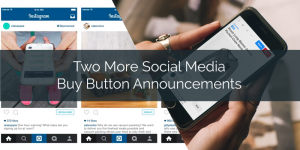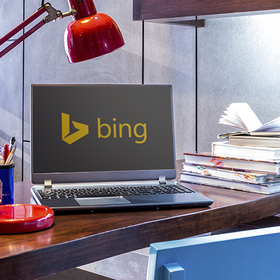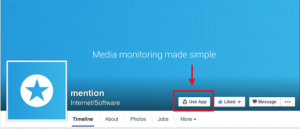 Are your email communication strategies as powerful as they could be?
Are your email communication strategies as powerful as they could be?
How many emails do you send every day? Wait, don’t answer that. Even thinking about how many messages we compose and share on a daily basis can be overwhelming. Here’s the better question: are you making the most out of every correspondence?
Treating every email recipient as respectfully as you should comes down to both knowing email etiquette and composing each message as clearly and concisely as possible—so you are not wasting your time or theirs. How are you doing on these fronts?
Email has been around for a long time, but in many ways, we are still getting used to it. Because it is a form of communication somewhere between a text message and a formal letter on company letterhead, people often slip-up. But it’s time to shine, folks.
A Review of Business Email Etiquette
- Reply to emails in a timely manner (within 24 hours).
• If you cannot respond to an email promptly, email back confirming your receipt and when the sender can expect your response.
• Hint: Using “FYI,” “No Response Necessary,” or similar at the start or end of an email can save everyone time—avoiding the pointless “thanks” and “sounds good” responses.
- Understand when to use the “To,” “CC,” and “BCC” fields.
• “To” is for people you expect a response from.
• “CC” is for people who are being kept in the loop.
• “BCC” is for people you want to include privately.
• Hint: Respect privacy by using “BCC.”
- Always include a professional greeting.
• Save cute, casual, or playful greetings for your personal messages.
• Options include: Good morning, Good afternoon, Hello, Hi
• Options do not include: Hey, Hey there, What’s up doc?, etc.
- Include the recipient’s name in the greeting with appropriate formality.
• Be cautious with abbreviating first names (e.g., “Mike” instead of “Michael”).
• If you are addressing someone by last name, be sure you use “Ms.” for women. Do not assume the “Miss” or “Mrs.” unless you are sure of the answer.
• Double-check your spelling. There’s no faster way to offend than misspelling someone’s name.
• Continue to use greetings and the recipient’s name in responses. It keeps a level of respect and formality (e.g., if email 1 began, “Good morning, David,” (more formal), email 2 could begin, “Hi, David,” which is slightly more casual but still professional).
• If you do drop the greeting in later emails, still include the name (e.g., “Thanks for the quick response, Sarah”).
- Know when to Reply, Reply All, or Reply to Some.
• “Reply All” should be used only when absolutely necessary.
• Hint: Rather than pressing “Reply All,” remove the unnecessary email addresses to continue a group conversation with only the essential recipients.
- If you receive an email clearly not intended for you, respectfully notify the sender of the mistake.
• Don’t just delete that message. Someone is expecting a response and might have the wrong reaction when no one replies.
• Common courtesy recommends a simple, respectful reply, noting the mistake. The sender will surely be grateful.
- Do not rely on formatting for emphasis.
• CAPS should always be avoided. It comes across as yelling.
• Bold, italics, underlining, and font size changes should be used sparingly.
- Avoid emoticons, abbreviations, and excessive exclamation points.
• This is a business correspondence after all.
- Avoid sarcasm and be careful with humor in emails.
• You are not coming off as witty or as clever as you think you are.
• When tone is misunderstood, as it often is, you can accidentally offend or confuse your reader.
- Do not hijack email threads.
• This is inconsiderate to those focusing on the original topic and makes a quick search for the new topic difficult.
• A new subject means a new subject line.
- Only discuss public matters (matters you wouldn’t mind forwarded).
• Email is not SnapChat. This history doesn’t go away.
• Save your business email address for emails about business.
Of course, even those who have mastered email etiquette can feel flabbergasted with endlessly refilling inboxes. People are busy, and attention spans can be hard to hold.
Guy Kawasaki proposes that virtually all emails can be composed in 5 sentences or fewer. “Less [sic] than five sentences is often abrupt and rude, more than five sentences wastes time,” Kawasaki says in his book APE: Author, Publisher, Entrepreneur (Nononina Press, 2013). Top execs from Steve Jobs (Apple) to Jeff Bezos (Amazon) to David Karp (Tumblr) to Akio Toyoda (Toyota) have adopted this strategy as a means of business efficiency, and the five.sentences movement has expanded exponentially. Are you up to the challenge?
The 5 Sentence Email Challenge
Make it a personal mission. Make it an internal email policy. Make it as widespread as you want to.
How do you write a 5 sentence email?
- Your email should address who are you (if needed), what you want, why you are asking the recipient (if needed), why they should do what you’re asking (if needed), and what the next step is.
- Cut out the extra details. Readers often don’t need as much as you think they do.
- Shorter emails will help you (and your reader) stay focused.
- Understand that brief doesn’t mean rude.
- Cut as much as possible, but never cut praise.
Hint: It’s easier on senders and recipients to have multiple easy-to-respond-to emails on different topics than one long, complex email that can be incredibly time-consuming to fully address. People respond to simple inquiries–be they important or unimportant–far faster than complex, multi-leveled discussions. Think about it. It’s true, isn’t it?
In the time it took you to read this article, did your inbox grow? Now what are you going to do about it? Be smart; be savvy; be respectful. Email communications don’t have to be the bear they sometimes seem to be.
(247)
Report Post




